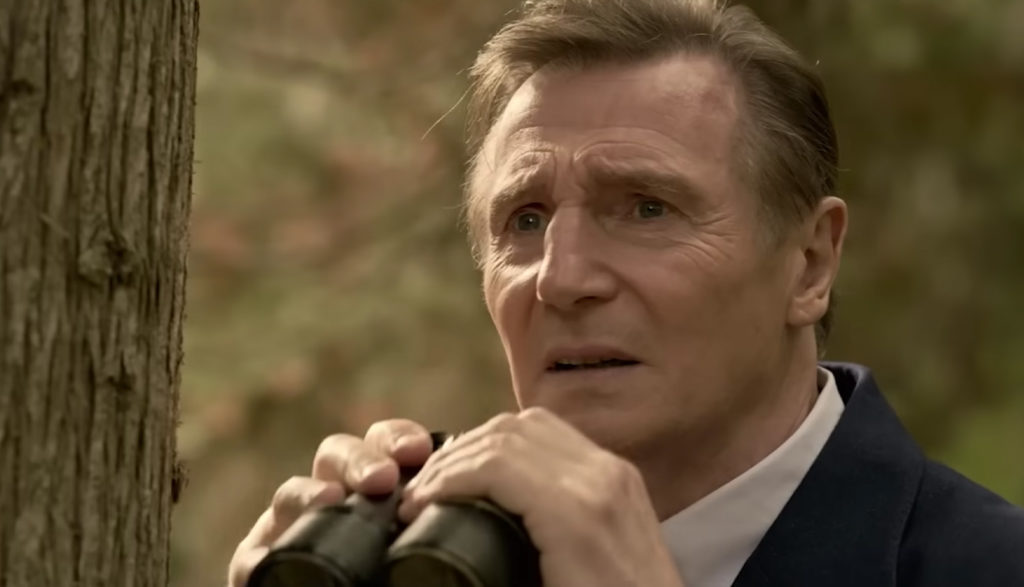
It was your typical day in 1939 Los Angeles. Detective Philip Marlowe sat at his desk, contemplating whether it was whisky that burned in his chest or his passion for justice. Most likely? Both.
That’s when she walks in: Clare Cavendish, a young blonde who looked as if she had just walked off a movie set. In fact, it was quite possible that she had. Because when she spoke to Marlowe, he became acutely aware of two things. First, Clare was the daughter of a famous silent film actress. Second, the man she wanted Marlowe to find: Nico Peterson, a small-time movie props guy, her adulterous lover who had recently gone missing.
It isn’t long before Marlowe, led by the cigarette clutched between his lips like an unkept secret, finds himself an answer: Nico had been killed in a hit-and-run just outside the luxurious Corbata Club. Then, his body had been cremated. Case closed.
But before Marlowe can return to the dusty, wooden room he so affectionally calls an office, Clare provides some information that opens up the case once more. The man who had been killed in the hit-and-run wasn’t Nico.
It couldn’t have been, because she saw Nico in Tijuana, Mexico.
And he certainly wasn’t dead.
Most people in this film are almost entirely self-serving. As for Marlowe, he’s hardly a saint. But he’s one of the few characters here who occasionally demonstrates that he has a moral compass.
A woman asks Marlowe if he was looking for pearls, and Marlowe replies that he throws them before swine, harkening back to Matthew 7:6. We hear a reference to the Seven Deadly Sins. A man attends a Día de los Muertos festival. A woman says she acted as “pagan princesses” in movies. A woman tells a man that he could “sell tickets to the gates of Hell.” We hear a joke about a movie prop for the Ark of the Covenant.
Clare makes repeated sexual advances toward Marlowe, attempting to get him to sleep with her. He refuses each time. In a bar, women dance seductively, and one naked woman is seen, her critical bits covered only by dollar bills. Two people kiss.
We find that Clare isn’t the only woman whom Nico is spending nights with, as Clare’s mother makes crudely evident. “My daughter wasn’t the only one spreading her legs for him,” she says. Someone asks if Nico “made time with” Marlowe’s wife.
Marlowe asks if Clare’s husband was a homosexual man, but Clare says he “wasn’t that interesting.” Marlowe implies that the husband wasn’t “thoughtful in the bedroom,” and he asks Clare if he ever sensually touched her. Another man unintentionally utters a homosexual double entendre and asks for it to be ignored.
An actress tells Marlowe that her mother told her she should have sex with movie producers to get better roles. We also hear about a woman whose role in movies was to play the virgin who eventually “surrendered” by the end of the film. A man is described as a pimp, and a building is called a “whorehouse.” There are references to a couple one-night stands. A woman says that a police officer attempted to kiss her after she identified her brother’s body.
A woman’s body is found, and we’re told that she had been raped and burned with cigarettes before having her throat cut. We see her face and neck caked in blood and cuts. A man’s head is gruesomely crushed by a car tire, and we’re left to look at the gory mess (and we later see a couple pictures of the same scene).
Other people are shot and killed, and blood jumps from their wounds with each hit. One man is shot multiple times before being burned alive. In a fistfight, a man’s head is smashed into a sink, and another man has a chair broken over his back. Someone’s foot is shot, and someone is knocked out. We see multiple bodies of various tortured people. A man is killed after his head is bashed into a thick metal pipe.
A man tries to poison another. Someone describes how someone was blown up by an artillery strike which launched the man’s tooth into his whisky glass. “I drank the whisky,” he says. An actress wears makeup which makes it look like she lost an eye.
The f-word is used nearly 20 times, and the s-word is used six times. We also hear a couple instances each of “a–,” “b–ch,” “d-ck,” “d–n” and “h—.” In addition, “whore” and “bloody” are used a few times. God’s name is abused five times, including twice being paired with “d–n.” Jesus’ name is misused twice.
We also hear a few racial slurs against both Mexican and Irish people.
Marlowe quickly finds himself solving a case that deals with people who sell drugs. To that end, a man snorts cocaine. A few men are said to be dealing or transporting drugs from Mexico, which one woman describes as the only type of business that exists in the country. A statue contains hardcore narcotics.
Most characters in the film are seen smoking almost constantly, and we see the frequent consumption of alcohol, too. There are references to intoxication.
A man asks another man if he’s “married, or happy?” When Marlowe loses his weapon, police give him another one so no one can accuse the station of losing weapons.
Marlowe dives into all the stereotypes that come with noir fiction: the handsome yet introspective detective who doesn’t play by the rules; the small case that inevitably ends up being much bigger than said detective could’ve guessed; and the fact that everyone speaks in parables and metaphors.
But the less savory tropes of the genre show up, too: the women who are just dying to start up yet another affair; the criminals who are more likely to be thrown in the grave than the slammer; and the nonstop smoking and drinking that makes one wonder if its Marlowe’s ruined bodily organs that’ll kill him before any criminal does.
As you might has suspected, the Philip Marlowe of this film is based on the famous detective of Raymond Chandler’s creation. The plot of this film follows Benjamin Black’s 2014 novel The Black Eyed Blonde. And though Marlowe’s fame might attract some fans of the character, Liam Neeson’s rendition here feels a bit flat and lacking—which was only muddled further by dull dialogue and a muddled plot.
The fatalistic approach of noir films, by its very nature, almost always clashes with Plugged In’s own values. But were we to approach Marlowe purely for its plot, we’d still find the evidence for its merit lacking—evidence I’m not sure even a legendary detective would be able to find.


Kennedy Unthank studied journalism at the University of Missouri. He knew he wanted to write for a living when he won a contest for “best fantasy story” while in the 4th grade. What he didn’t know at the time, however, was that he was the only person to submit a story. Regardless, the seed was planted. Kennedy collects and plays board games in his free time, and he loves to talk about biblical apologetics. He thinks the ending of Lost “wasn’t that bad.”